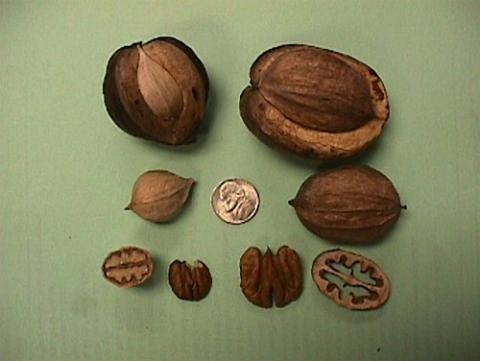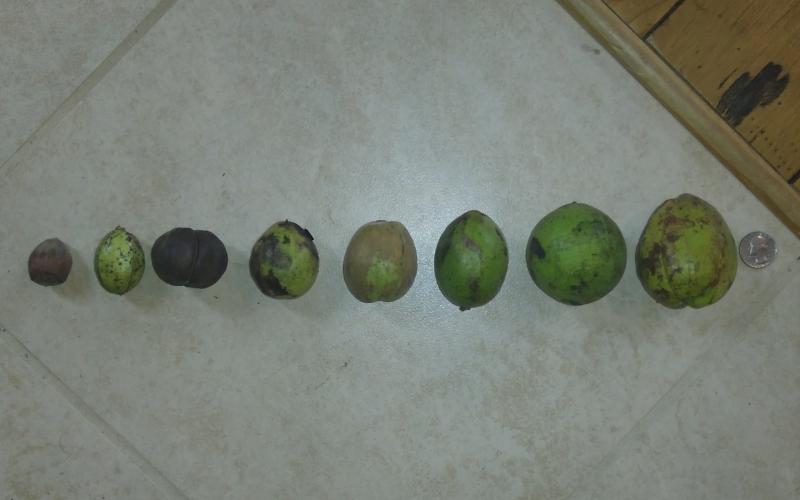Carya laciniosa
Description

Shagbark left, Shellbark right (improved selections)
The wood of shellbark hickory is hard, heavy, strong, and very flexible, making it a favored wood for tool handles. The hardness and beauty of the grain also make it desired for furniture, cabinets, and veneer. All hickories, however, suffer from ring shake, a separation of wood along the annual rings and a serious problem for thin veneers. It also is prized as fuelwood and charcoal. The nuts of shellbark hickory are sweet and edible and the largest of all hickories. They are eaten by a wide range of wildlife species, including ducks, quail, wild turkeys, squirrels, chipmunks, deer, foxes, raccoons, and white-footed mice. The tree is rarely planted as a shade tree; it is relatively slow growing and difficult to move because of its taproot. Numerous cultivars have been selected for use in nut production or as grafting stock.
Shellbark hickory is similar to shagbark (Carya ovata) in its bark that peels away in plates. Trees of shellbark tend to be shorter and with heavier branches than shagbark, and the bark plates of shellbark hickory are straighter (with less curve). Shellbark generally has 7-9 leaflets (vs. 5) and the leaves do not have tufts of hair at the tip of the teeth. The shellbark hickory prefers bottomlands and is not as widely distributed as the shagbark. The flavor of shellbark kernels is considered by many to be inferior to shagbark hickory.
Shellbark hickory grows primarily in the Ohio and upper Mississippi River valleys, but the total range is wider, from New England west to southeastern Iowa, then south to northeastern Oklahoma, Tennessee, and Kentucky, with isolated populations in southern Arkansas, east Texas, Mississippi, Alabama, and northern Georgia.
Files
| Attachment | Size |
|---|---|
| 40.75 KB |

